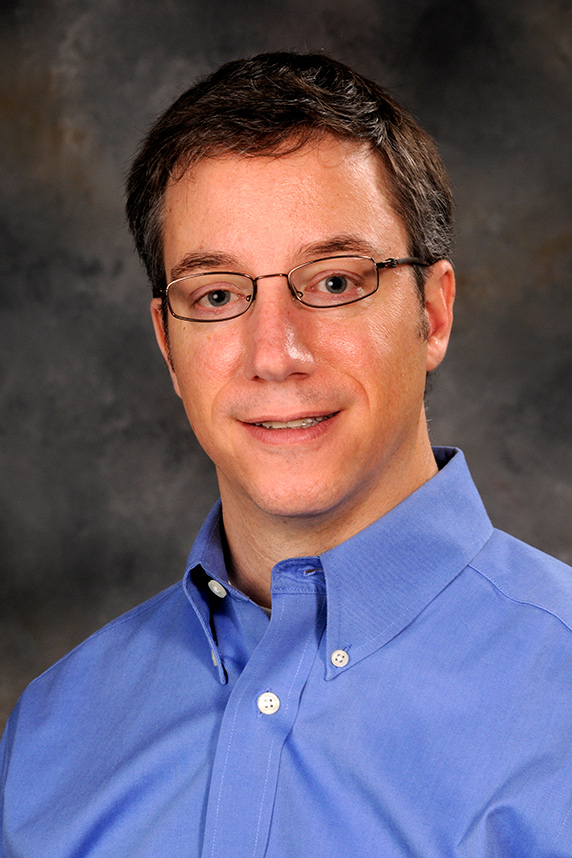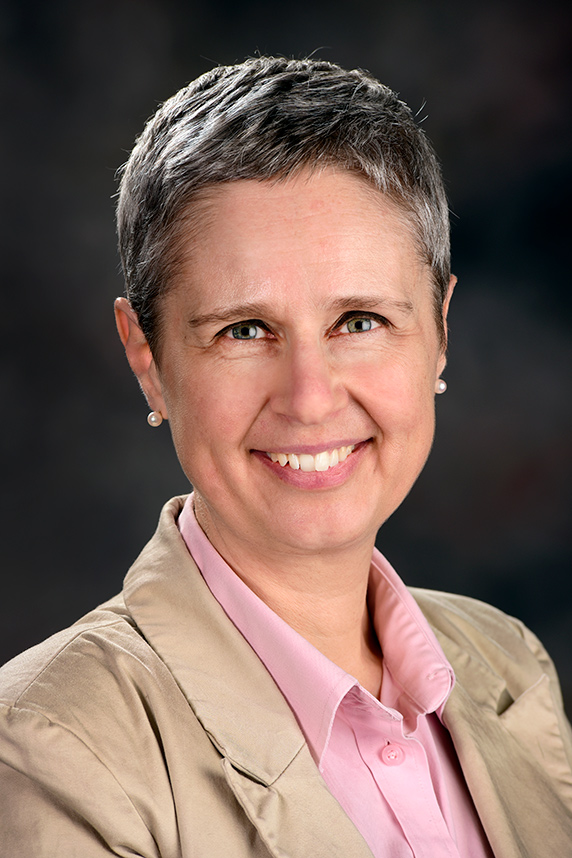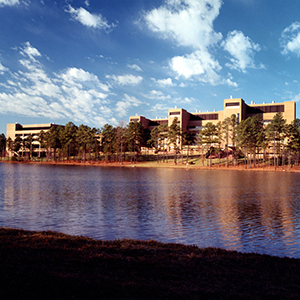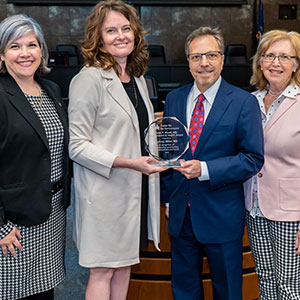 Novak’s team works to reduce or eliminate the risks of illness and injury from occupational and environmental health hazards at NIEHS. (Photo courtesy of Steve McCaw / NIEHS)
Novak’s team works to reduce or eliminate the risks of illness and injury from occupational and environmental health hazards at NIEHS. (Photo courtesy of Steve McCaw / NIEHS)NIEHS officials announced last month that the institute has joined the U.S. Environmental Protection Agency (EPA) Green Power Partnership. The program is a collaborative effort among more than 700 public and private organizations to raise awareness about the benefits of using green power.
“NIEHS is excited to join the EPA and their incredible partners who are leading by example with their use of green power,” said Steve Novak, head of the institute’s Health and Safety Branch. “Our institute has a history of energy conservation and environmental stewardship. Our inclusion in this partnership, therefore, only serves to expand that longstanding tradition.”
In addition to promoting the use of renewable energy to the public, Green Power Partners also seek to reduce the negative health impacts of air emissions, including those related to ozone, fine particles, acid rain, and other forms of pollution.
A legacy of sustainability
 “By procuring green power equal to 34% of its electricity, NIEHS went above and beyond the Green Power Partnership’s minimum 10% requirement,” said Johnson. (Photo courtesy of Steve McCaw / NIEHS)
“By procuring green power equal to 34% of its electricity, NIEHS went above and beyond the Green Power Partnership’s minimum 10% requirement,” said Johnson. (Photo courtesy of Steve McCaw / NIEHS)According to data compiled by Novak’s office, NIEHS facilities are presently using 11 million kilowatt-hours (kWh) of green power annually. This amount represents enough green power to meet 34 percent of the institute's overall electricity use. It is also the equivalent of more than 1,000 average American homes annually.
“The NIEHS mission is to discover how the environment affects people in order to promote healthier lives,” said Paul Johnson, head of the NIEHS Environmental Stewardship group. “Maintaining strong stewardship of our resources, be they human, environmental, or financial, is very much a key component in how we measure that mission’s success.”
As part of its sustainability strategy, NIEHS purchases Green-e Certified solar and wind energy Renewable Energy Certificates (RECs), which are then verified by a third-party that confirms the green power sold was produced as documented in the RECs.
 According to Hartung, NIEHS plans to purchase RECs to maintain the campus Net Zero Energy-REC designation for fiscal year 2022. (Photo courtesy of Steve McCaw / NIEHS)
According to Hartung, NIEHS plans to purchase RECs to maintain the campus Net Zero Energy-REC designation for fiscal year 2022. (Photo courtesy of Steve McCaw / NIEHS)According to NIEHS Sustainability Coordinator Kerri Hartung, “while RECs are playing an important role in jumpstarting NIEHS’s net-zero energy status, energy conservation has been, and will continue to be, a priority for our institute.”
Hartung explained that the institute’s local power company, Duke Energy, is currently compiling an assessment of NIEHS power usage that will help institute officials find new ways to generate renewable energy on campus and make better use of the energy it requires.
About the program
The Green Power Partnership program was launched in 2001 by the EPA to encourage the voluntary use of green power among other organizations in hopes of protecting human health and the environment. The partnership aims to achieve the following.
- Advance the American market for green power.
- Encourage the development of new U.S.-based renewable electricity sources.
- Reduce air emissions and pollution.
- Recognize leadership and impact in green power use.
- Support basic market principles and practices that serve all U.S. electricity consumers.
Green Power Partners include a wide range of organizations, including large corporations, government agencies of all sizes, non-profit groups, and colleges and universities.
The climb toward sustainability
While NIEHS officials are proud of their institute’s efforts to leverage and promote green energy, all involved recognize that the road to a cleaner, more sustainable future will require more hard work.
“Biomedical research facilities are energy intensive, and NIEHS is sensitive to the amount of energy that it uses,” Johnson added. “Our aim is to ultimately reduce the amount of power needed to run our operations by increasing campus energy conservation, and to meet our remaining needs via onsite renewable energy options where technically and fiscally possible.”
(Ian Thomas is a public affairs specialist with the Office of Communications and Public Liaison, and a regular contributor to the Environmental Factor.)









